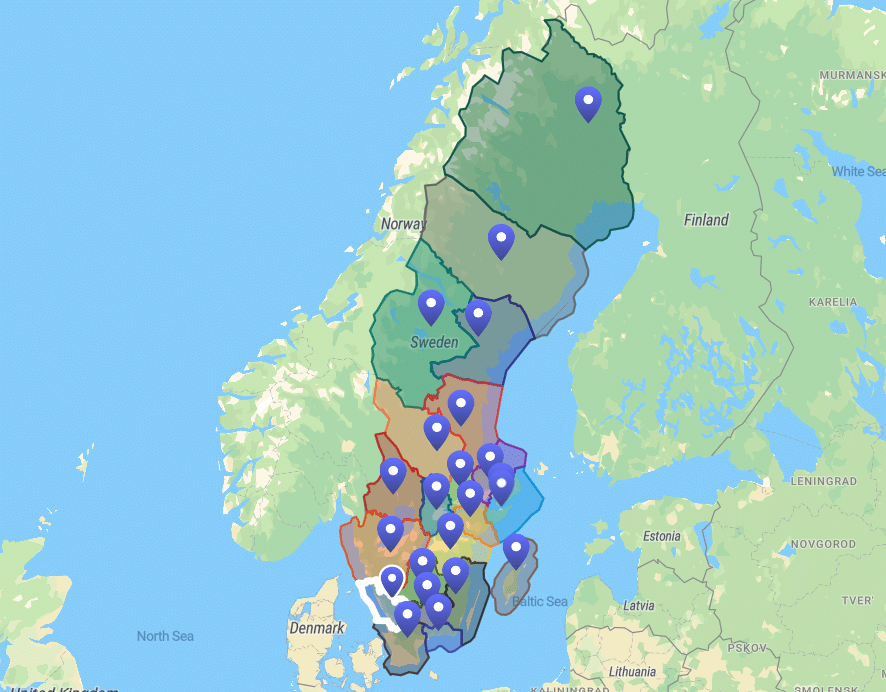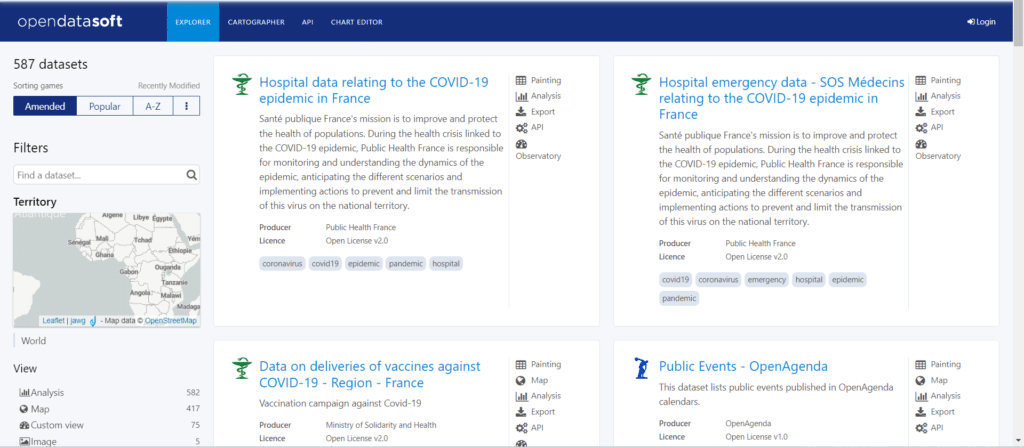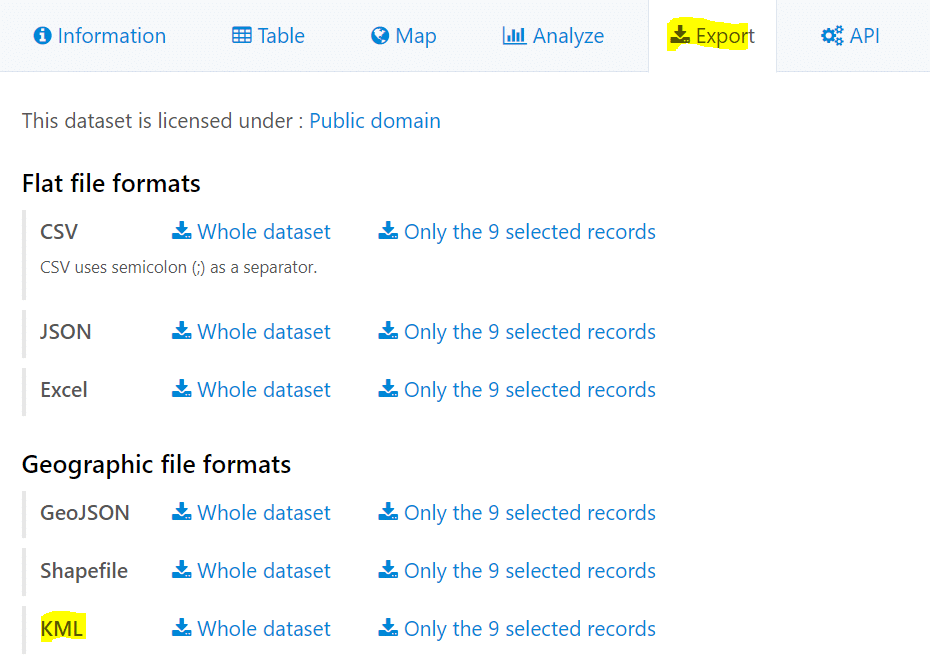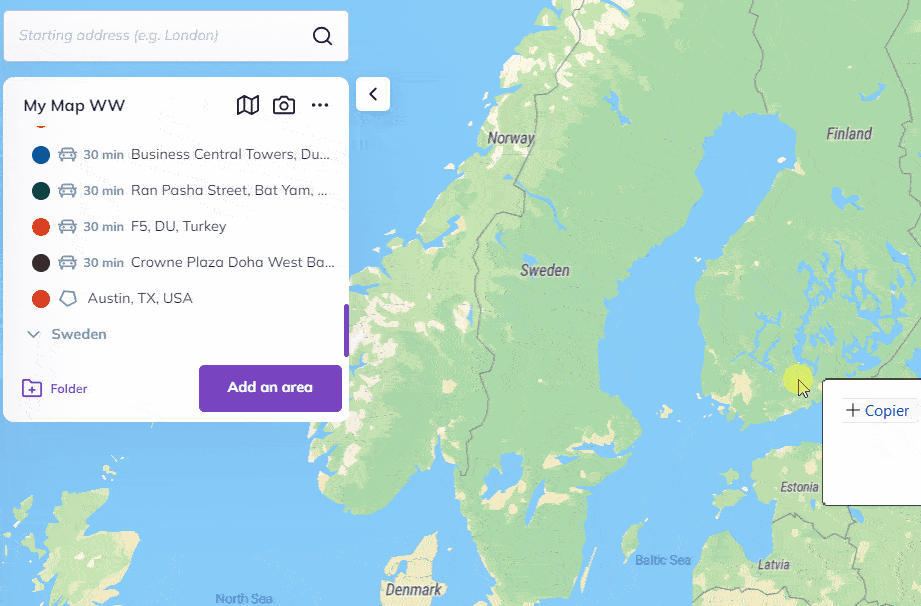It is sometimes essential to be able to create areas based on administrative divisions, such as states, counties, county equivalents or zip codes, as shown in this image:

This can enable you to:
- Produce comparative analyses of catchment areas against a reference area (e.g. a particular county)
- Create catchment areas based on an administrative division (zip codes, states, etc.)
- See a visual comparison of the existing administrative division with your catchment areas
For the moment the area creation based on administrative boundaries is only available in France, in the U.S. and in Belgium.
To do it for any other country, you should :
– First start by downloading the information
– Importing the administrative boundary into your map
Download administrative boundaries
First of all, you have to download data on the administrative divisions that are of interest. For example, you could visit the Opendatasoft website.
First, we should recommand to sort the results for a specific country : use the filters and add the name of the country you are looking for.

Make sure that you filter the search results in Opendatasoft, so that you only download the data on the areas you need.
If you try to display more than a few hundred areas on the smappen map, it will be significantly slowed down and user experience could be negatively impacted.
Before downloading the data for your areas, you can view them and select the ones that interest you using the “Map” tab:

Use the “Export” tab to download the date for your chosen areas in KML format:

To download the selected areas, click on “Only the X selected records” in the KML line:

For areas in other countries, you might be able to find data by searching the internet, for example by using the keyword “KML”, along with the area type and country in question.
Import your area boundaries
Create a new folder for your areas and import the KML file containing the areas’ data by dragging the file and dropping it onto the map.

To go further:
